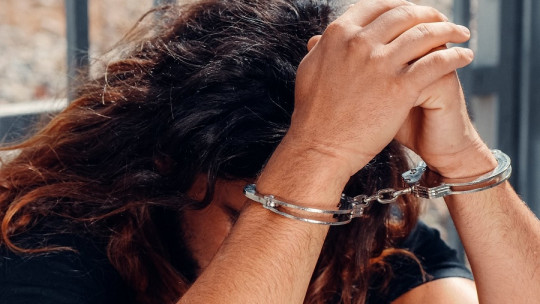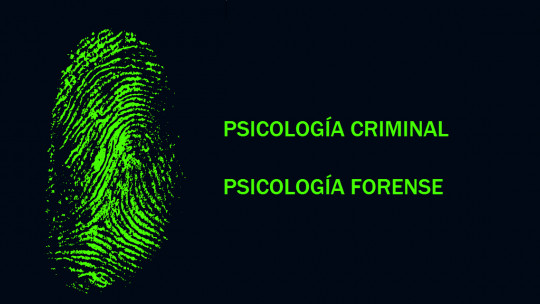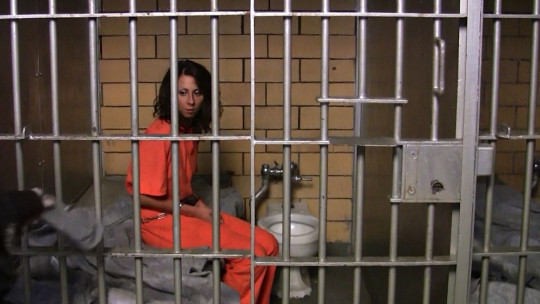
Prison sentences, at least in countries where human rights are respected, have the objective of making the individual who has committed a crime learn from it, learning that he should not do it again and leave prison to reintegrate into society.
However, although the commission of a crime can have many causes behind it, sometimes behind it there is a mental health problem, a dysfunctional personality pattern and antisocial behavior that, if not treated, will prevent the correct reintegration of the individual into the community. social core.
Clinical criminology aims to establish the criminological diagnosis that explains the antisocial behavior of a criminal, in order to be able to develop a treatment that helps him adapt to society once he completes his sentence. Let’s go deeper into this branch of criminology.
clinical criminology
Clinical criminology is the branch of general criminology that aims to study people who have committed a crime in order to establish a diagnosis of their behavior, propose a prognosis of how they will evolve in the short and long term, and develop a treatment in order to ensure that the person does not commit the same crime again. This discipline is based on the clinical and individual study of the offender, understanding that every criminal act is abnormal behavior, possibly the result of a conflictive personality or a certain problem of violence.
The main purpose of custodial sentences, that is, prison sentences, is reintegration. These types of penalties are applied with the aim of ensuring that the subject who has committed a crime learns from his actions and does not commit them again once he enjoys freedom, hoping that he behaves in a socially appropriate manner. This objective is not possible if the pathology of the offender, if any, is not taken into account, since it will require specific treatment, which is the usefulness of clinical criminology in the criminal field.
Among the references within the field of clinical criminology we can find figures such as César Lombroso, Rafael Garólofo and Enrico Ferri and within this field the intention is to undertake the task of diagnosing and treating people who have committed a crime with in order to apply the necessary criminal prophylaxis measures to prevent them from committing it again. In the words of Benigno Di Tullio, The treatment of people who have committed crimes focuses on physical-psychosomatic, social, ethical, educational and moral rehabilitation

Methodology of clinical criminology
Within the methodology of clinical criminology the following points can be highlighted:
Multiple scientific disciplines are involved in the clinical method applied in criminology, which means that it can be stated that This branch of criminological science is multidisciplinary The clinical work addressed at the crime scene, commission of the act and individual who carried it out is a scientific investigation that involves biology, neurology, psychiatry and general medicine.
All the data obtained from these branches are applied to the explanation of the possible causes behind the commission of the crime or criminality of the individual, aiming to obtain data and reports related to organic functioning, neurological, physiological, endocrinological, somatic and mental applied to criminological research. This same information is what can be revealed to us What abnormal or pathogenic causes have predisposed the individual to present antisocial personality and behavior? that has shown.
Criminological diagnosis
The clinical criminological diagnosis is carried out in order to determine the degree of danger of the offender At this point in the evaluation, 4 important phases in the commission of the criminal act are taken into account.
Each individual is a different entity, that is, a person with his or her biological, psychological and social individuality, and therefore the reasons that have pushed someone to commit a crime are very varied. That is why it is necessary to know the subject in as much depth as possible, study it and approach it taking into account its family, personal and social history, data that will facilitate the criminological diagnosis in case there is a disorder or pathological behavioral pattern, determine the profile. of criminological personality and the genesis of crime.
Even so, it is worth mentioning that although the personal and family history of an individual is known before the commission of the crime and the type of personality is determined, it does not offer a solution to the problem, but it does provide information on how one could proceed. from this point, contributing to the development of a treatment reintegration plan
Criminological treatment
Criminological treatment is the set of elements, norms and techniques that are applied in order to restructure the personality and behavior of a person, in order to turn them into a functional individual for society, that is, to fully reintegrate and not return. to commit a crime of any kind. Thus, criminological treatment can be defined as the means to prevent the individual from reoffending
The treatment to be applied will vary greatly depending on the type of crime, the type of personality of the individual who committed it and the diagnosis fundamentally. The treatment must comply with what is pre-established by law, not violate fundamental rights and must be the subject of criminological investigation, in order to prevent crime and also avoid the excessive extension of the treatment.
Individual-family treatment
In clinical criminology, the effect that the family can have on the individual and their relationship in the commission of the crime is not ignored, since The family is the primary and fundamental cell in society Its influence is very powerful on most people, to the point that it can be responsible for the erratic behavior of someone who has committed a crime, especially if there are dysfunctional dynamics in the family unit.
There are many ways in which family influences us, even as adults. The influence of intimate characteristics on the dynamics of the family group, the personality of the parents, relationships with relatives, the criminal history of a close member and several other aspects deeply mark the formation of the human being, greatly influencing the individual. All of this can result in a person committing crimes, if the right conditions exist for the development of a pathological and dysfunctional personality.
This is why, if the necessary tools are available for this and the family of the person involved is interested in collaborating, they must also proceed to intervene in the family, modifying the pathological dynamics that may exist there and improving the functionality of both the individual once he has served his sentence and the rest of the members of his family nucleus By intervening in the family you can not only prevent the person who has committed the crime from doing it again, but you can also prevent a relative from also committing a criminal act.








